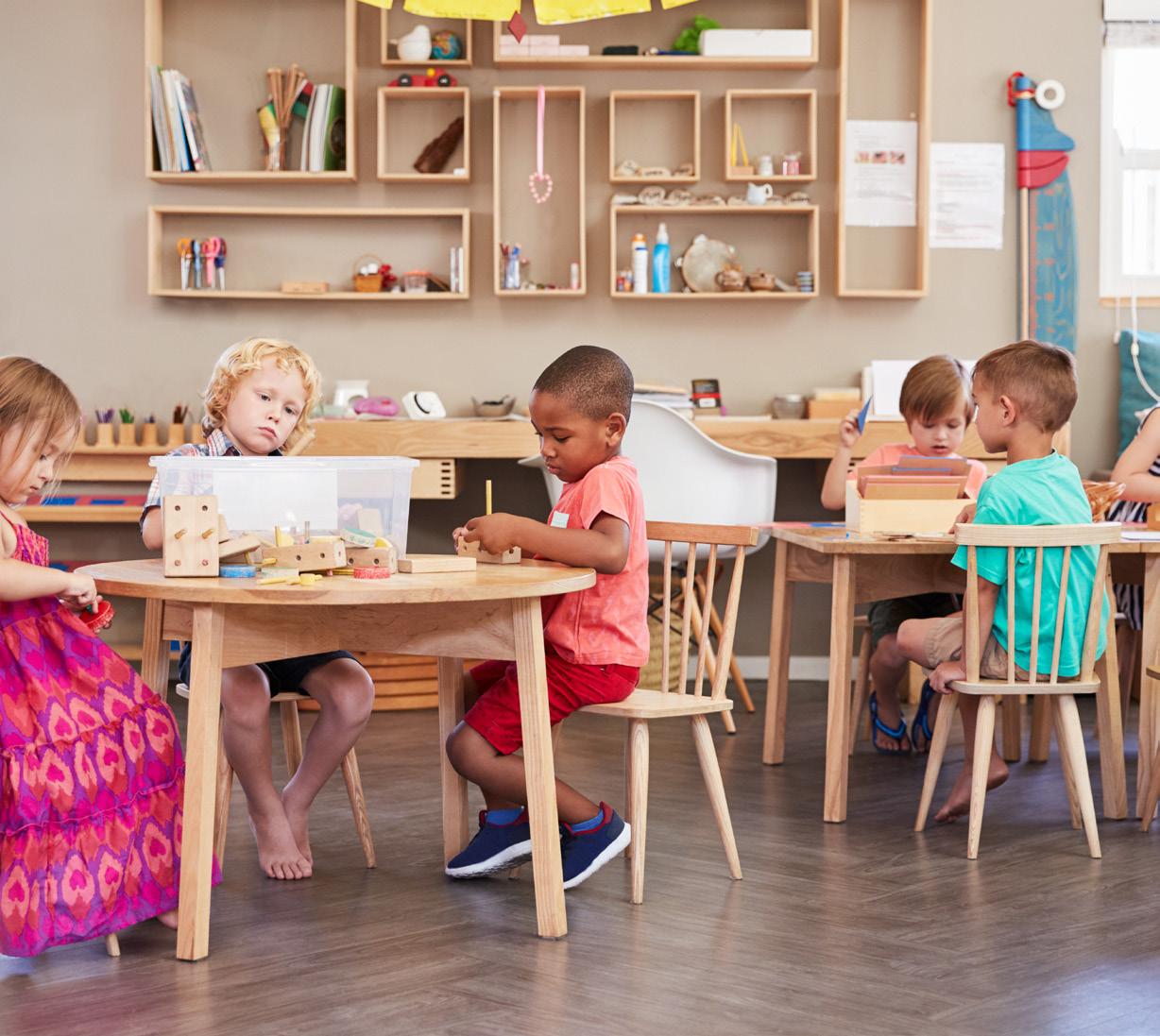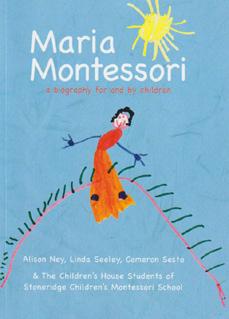
6 minute read
Staying the Course The Importance of Montessori for the Kindergarten Year
by Tim Seldin
It’s re-enrollment time, and if you or a friend have a child who will be ‘ready’ for kindergarten next fall, you may be debating about sticking with Montessori or sending them off to the local schools.
The choice may seem apparent. Why would anyone want to invest in another year’s tuition when the local schools are free?
Naturally, the answer may be connected to family finances. However, many families of modest means make their children’s education a top priority and see the choice of staying in Montessori as an essential investment in their children’s future.
So here are a few answers to some of the questions parents often ask about Montessori for the kindergarten year.
Why not send their children to the neighborhood school?
Studies show that consistency in educational programs matters, especially in the first six years of life. When children transfer from Montessori to a traditional kindergarten, they spend the first year adjusting to a new class, teacher, and school system with very different expectations. In most elementary schools, the public address system interrupts the day with announcements, children are told what to do as a group, and the focus is on the teachers, not independent learning, through textbooks and workbook exercises. The Montessori materials give the child concrete sensorial impressions of abstract concepts, such as long division, that become the foundation for a lifetime of understanding.
Most kindergartens have a much lower set of expectations for five-year-olds than Montessori programs, which dramatically changes the course of their learning during this crucial year of their lives.
In most cases, Montessori kindergarten children have not only begun to read, write, and do math and geometry, they are learning about geography, history, science, art, and much more.
For example, their understanding of the decimal system, place value, mathematical operations, and similar information is usually very sound. With reinforcement, as they grow older, it becomes internalized and a permanent part of who they are. When they leave Montessori before they have had the time to internalize these early concrete experiences, their early learning often evaporates because it is neither reinforced nor commonly understood.
Children learn to do as they are told and follow a state-mandated curriculum designed by a committee that assumes children should all be taught the same things at any grade level.
The state-mandated curriculum is one of the gravest challenges faced in many traditional schools. It works for some students, but it often fails when a child is ready to move much more quickly or needs more time. They were designed for mass education along the lines of a large standardized system. Montessori puts the individual child in the center and works to support their intellectual, social, and emotional development.
What would be the most significant advantages of keeping my five-year-old in Montessori?
Montessori is based on what we’ve learned about children’s cognitive, neurological, and emotional development from many years of research. Although sometimes misunderstood, the Montessori approach has been acclaimed as the most developmentally appropriate model currently available by some of America’s top experts on early childhood and elementary education.
A critical difference between what Montessori offers five-year-olds and what is offered by many of today’s kindergarten programs is how it helps the young child learn how to learn.
Over recent years, educational research has increasingly shown that students in many schools don’t understand most of what they are taught. As Howard Gardner, a leading educational psychologist and advocate of school reform wrote:
In a primary Montessori classroom, three and four-year-olds receive the benefit of two years of Sensorial preparation for academic skills by working with concrete Montessori learning materials. This hands-on experience gradually allows the child to form a mental picture of concepts, such as: How big is a thousand? How many hundreds make up a thousand, and what happens when we borrow or carry numbers in mathematical operations?
Parents and educators often underestimate the value of the younger children’s hands-on experiences in Montessori. Research shows that young children learn by observing and manipulating their environment, not through textbooks and workbook exercises. The Montessori materials give the child concrete sensorial impressions of abstract concepts, such as long division, that become the foundation for a lifetime of understanding.
Won’t my five-year-old spend her kindergarten year taking care of younger children instead of doing her own work?
No, not at all! When older children work with younger students, they learn more from the experience than their ‘students.’ Traditional schools often limit opportunities to develop a child’s independence.
Five-year-olds are usually early childhood Montessori classrooms’ leaders and role models. They help to set the tone and serve as an example of appropriate behavior for the class. They often help younger children with their work, teaching lessons, or correcting errors.
Most five-year-olds have been waiting for the longest time to be one of the ‘big kids.’ The experience of playing the leadership role reinforces the five-year-olds’ sense of autonomy and self-confidence.
Five-year-olds are beginning to reflect upon the world. They pay closer attention, notice more details, ask more questions, and begin to explain the world on their own terms. The kindergarten year is when the child begins to integrate everything she learned in the first few years.
By the end of age five, Montessori students will commonly develop academic skills that may be quite advanced; however, academic progress is not our ultimate goal. We hope these children will feel good about themselves and enjoy learning. Mastering basic skills is a side goal.
The critical concept is readiness. In Montessori, if a child is developmentally ready to advance to a new skill or level of understanding, they are both included and made to feel like a success. Our goal is not to ensure that children develop at a predetermined rate but to ensure that whatever they do, they do well and feel good about themselves as learners.
When the time comes to decide, give your child the gift of Montessori for kindergarten.










